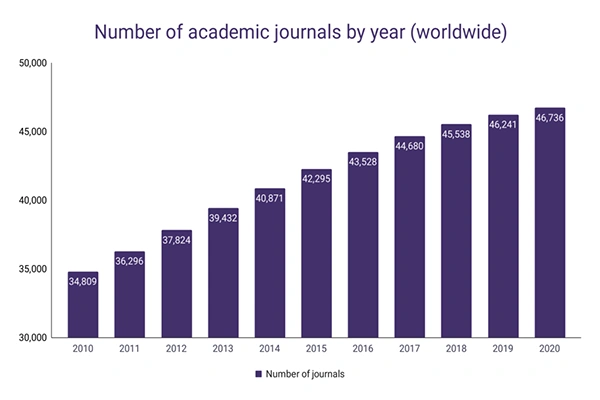How To Write An Introduction For A Research Paper

Many students, even teachers, find it challenging to write the introduction of a research paper. Beginning often seems hard, but they are not. Introduction is the foundation of your research paper.
You have to make the content of the intro engaging so that it can hook the readers and answer their prime questions related to the topic.
For students seeking time-saving alternatives, exploring the option to buy research papers from reputable sources can offer professionally written introductions that set the tone for a well-structured and impactful academic work. Also, learn about Strategies for Your Term Paper with this guide.
Provide Relevant Background Information and Context
It is the most needed aspect that you write an intro that conveys the context and background information of the research paper to the reader.
Define key terms that will feature prominently in the paper. Briefly summarize prior or influential research related to the topic. Provide historical context if useful.
The background information should directly connect to the topic and help the reader understand why the subject and research problem matter. Restrict background facts to directly relevant details.
For example, if examining the impact of media on body image issues, provide background on the rise of mass media, advertising, and the modeling industry in the 20th century.
Such context orients the reader without becoming a lengthy tangent. The goal is to help readers understand the research context and importance of the problem.

Interesting Facts
Academic papers have been published throughout the years worldwide. 10000 more academic journals have been published in 2011-20 than last decade. In 2020, 46,736 research papers were published. Publishing academic papers has grown by 28.7% in the last decade. It is growing by 2.56% every year.
Clearly State the Research Problem
Your introduction should not be complex and too long, it is supposed to be concise and have clear intent. This identification and articulation of the research gap is a vital component of a paper’s introduction.
Strong research emerges from the desire to solve a particular issue or answer a specific, meaningful question. Concisely define the problem within the background context and explain why it represents a main area for inquiry. Your introduction should reflect the worthiness and necessity of the research problem.
For instance, the research problem might be: “While substantial research examines media effects on male body image, less is known about media impacts on female body image development vital during adolescence.” Defining the gap highlights the purpose and significance.
Specify Your Thesis Statement
Clearly state your paper’s purpose and argue the position or thesis you will make regarding the problem after summarizing the research problem. This thesis statement provides a focus for both you as the writer and the reader.
The thesis indicates your angle or approach to addressing the gap. Your introduction may also briefly outline the structure of the paper and summarize key points. By mapping out the flow early on, you help ensure the paper logically builds its central argument.
Here is an example thesis statement: “This paper argues that stricter gun control policies including comprehensive background checks, assault weapons bans, and required safety training are necessary to reduce gun deaths in America.” The thesis declares the paper’s stance.
Describe Your Approach and Sources
The next thing you should remember about intro writing is to explain the approach and sources you used while doing the research. This section provides a broad overview of your methods, models, overall approach, key sources, and other details.
The goal is to show the validity of your process without excessive detail. For those seeking expert assistance and a polished introduction, turning to top case study writing services ensures a meticulously written opening that sets the stage for a successful research paper.
You don’t have to give thorough data on information or grants – save that for the strategies and writing audit segments. All things considered, momentarily portray the review plan, hypothetical system, sources, or different subtleties that exhibit your methodology is scholastically thorough. This persuades the peruser your interaction is sound.
Conclude the Introduction with a Transition
The last sentence ought to progress flawlessly into the remainder of the paper. It might momentarily review the impending first area or subject.
For instance, “To comprehend the underlying drivers driving firearm viciousness in America, we first fundamentally analyze the most recent information and measurements.”
By and large, keep the presentation moderately short and centered – commonly under 10% of the complete paper length.
Stay away from extensive presentations that wander gradually without clear reason. Be compact yet considerable to charm the peruser truly.
DO YOU KNOW?
There is a myth among people that a research paper must flow perfectly from start to end. But this is not the reality, writing a research paper iterative process.
You have to write and refine all sections again and again to get the final desired result.
An early draft is just meant to be to build an idea and create content. You can edit the formatting and grammatical aspects later in editing.
Key Principles for an Engaging Introduction
Writing an engaging introduction requires planning, focus, and effort. Here are some fundamental principles to follow:
- Open with a compelling hook to immediately grab the reader’s attention.
- Provide just enough background information to frame the topic.
- Clearly define and convey the significance of the research problem.
- State your thesis precisely and explicitly.
- Briefly explain your approach, sources, and methods.
- Use transitions and signposting to cue structure.
- Wrap up with a smooth segue to the next section.
- Remain focused and concise – avoid unnecessary tangents.
While difficult to write, the introduction sets the stage for the entire paper and helps engage readers. A thoughtful, tightly focused introduction intrigues your audience and sets you up for a successful paper. Follow these principles to craft an impactful introduction.
Common Pitfalls to Avoid When Writing Introductions
While drafting an introduction, be mindful of these frequent pitfalls:
Failing to Immediately Hook the Reader
A generic and boring opening fails to grab the reader’s attention and the reader is most likely to lose interest in reading. Jumping right into the topic or background information without an intriguing hook misses an opportunity to actively engage the reader from the very start.
Providing Excessive Background Details
Providing background details and context of the subject is necessary but do not spend multiple pages providing background context. Hit the key highlights needed to frame the topic and research gap. Avoid lengthy tangents and redundant or unnecessary details. Stick to directly relevant facts.
Stating a Murky, Vague, or Overly Broad Thesis
A poorly defined thesis prevents establishing clear direction and focus. Readers struggle to grasp the paper’s central purpose and argument. An explicit, focused thesis statement communicates the essence of the paper.
Including Irrelevant Details About Methods and Results
The introduction should not summarize results or methodology – save that for the full sections devoted to them. Stick to brief overviews and avoid unnecessary statistics or details at this stage.
Forgetting Signposting and Transition Phrases
Introductions should utilize signposts and transitions to cue structure and direction. Phrases like “First, we will…” or “Building on this data…” help orient readers.
Ending Abruptly Without a Conclusion
Wrap up the introduction with a final statement or transition into the next section. Bluntly ending the introduction seems amateurish. Provide closure.
Being Too Wordy and Unfocused
Rambling introductions full of vague filler lack purpose are not able to hook the attention of the reader. Your introduction should remain concise yet substantive. Always keep it under 10% of the total length and avoid massive introductions.
Keep these potential pitfalls in mind when writing an introduction. Careful planning, focus, editing, and feedback can help avoid these issues.
Your introduction sets the tone and direction for the whole paper thus try to make it engaging, focused, and informative. Use available resources to strengthen your introduction writing skills.















